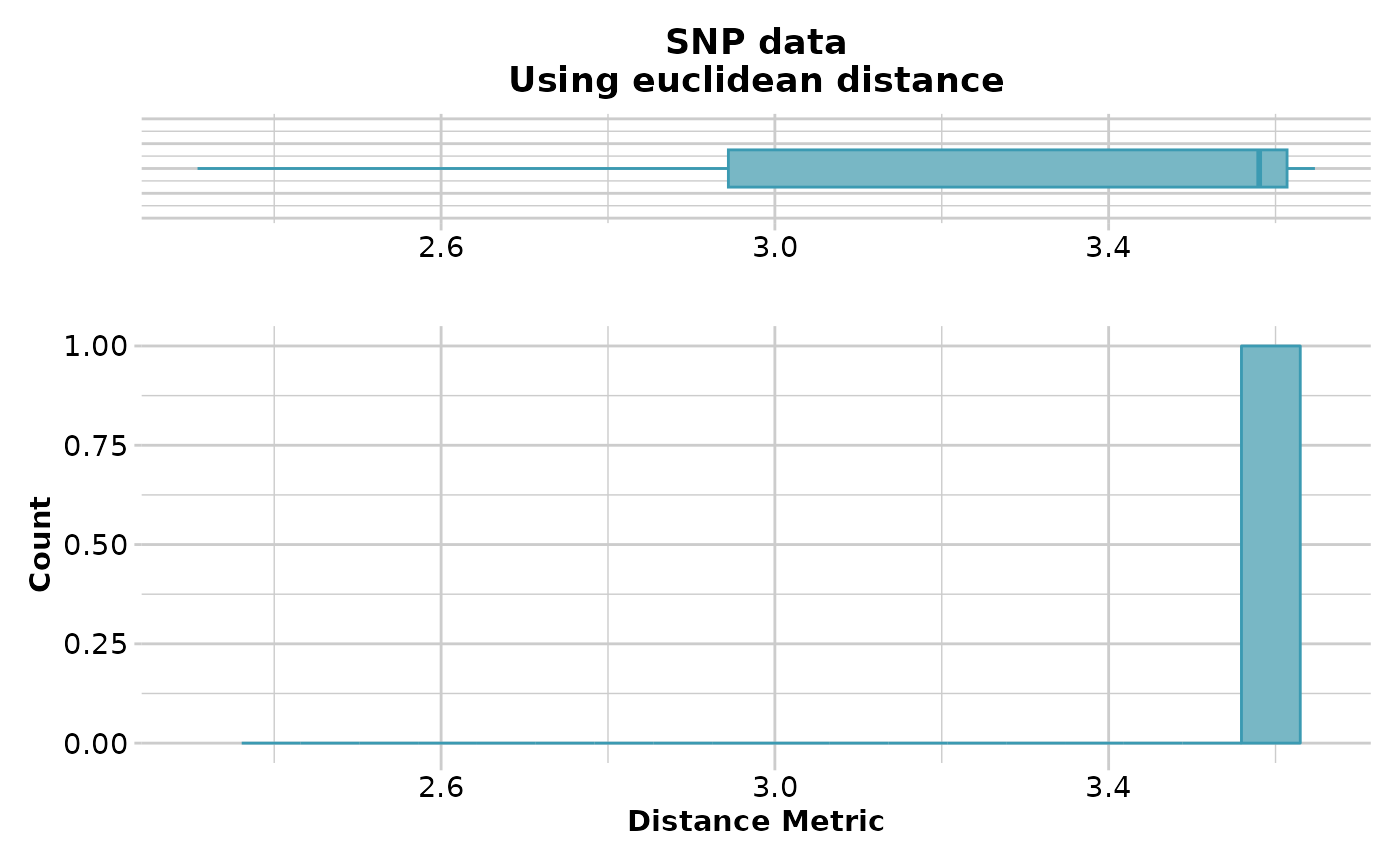Calculates a distance matrix for populations with SNP genotypes in a genlight object
Source:R/gl.dist.pop.r
gl.dist.pop.RdThis script calculates various distances between populations based on allele frequencies (SNP genotypes) or frequency of presences in presence-absence data (Euclidean and Fixed-diff distances only).
gl.dist.pop(
x,
method = "euclidean",
plot.out = TRUE,
scale = FALSE,
output = "dist",
plot_theme = theme_dartR(),
plot_colors = two_colors,
save2tmp = FALSE,
verbose = NULL
)Arguments
- x
Name of the genlight containing the SNP genotypes [required].
- method
Specify distance measure [default euclidean].
- plot.out
If TRUE, display a histogram of the genetic distances, and a whisker plot [default TRUE].
- scale
If TRUE and method='Euclidean', the distance will be scaled to fall in the range [0,1] [default FALSE].
- output
Specify the format and class of the object to be returned, dist for a object of class dist, matrix for an object of class matrix [default "dist"].
- plot_theme
User specified theme [default theme_dartR()].
- plot_colors
Vector with two color names for the borders and fill [default two_colors].
- save2tmp
If TRUE, saves any ggplots and listings to the session temporary directory (tempdir) [default FALSE].
- verbose
Verbosity: 0, silent or fatal errors; 1, begin and end; 2, progress log ; 3, progress and results summary; 5, full report [default 2 or as specified using gl.set.verbosity].
Value
An object of class 'dist' giving distances between populations
Details
The distance measure can be one of 'euclidean', 'fixed-diff', 'reynolds', 'nei' and 'chord'. Refer to the documentation of functions described in the the dartR Distance Analysis tutorial for algorithms and definitions.
Examples
if (FALSE) { # \dontrun{
# SNP genotypes
D <- gl.dist.pop(possums.gl[1:90,1:100], method='euclidean')
D <- gl.dist.pop(possums.gl[1:90,1:100], method='euclidean',scale=TRUE)
#D <- gl.dist.pop(possums.gl, method='nei')
#D <- gl.dist.pop(possums.gl, method='reynolds')
#D <- gl.dist.pop(possums.gl, method='chord')
#D <- gl.dist.pop(possums.gl, method='fixed-diff')
#Presence-Absence data [only 10 individuals due to speed]
D <- gl.dist.pop(testset.gs[1:10,], method='euclidean')
} # }
res <- gl.dist.pop(platypus.gl)
#> Starting gl.dist.pop
#> Processing genlight object with SNP data
#> Warning: data include loci that are scored NA across all individuals.
#> Consider filtering using gl <- gl.filter.allna(gl)
#> Calculating distances: euclidean
#> Refer to the dartR Distance Analysis tutorial for algorithms
#>
 #> Returning a stats::dist object
#> Completed: gl.dist.pop
#>
#> Returning a stats::dist object
#> Completed: gl.dist.pop
#>